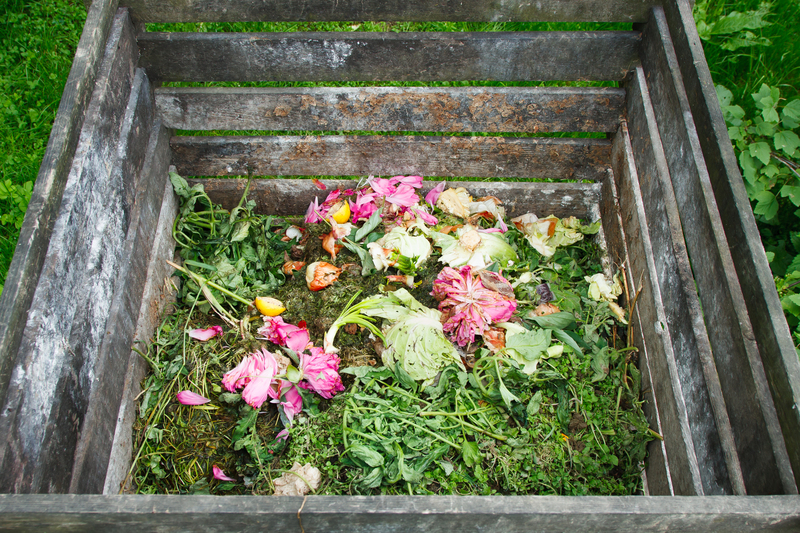Give Old Pots and Pans New Life with Upcycling and Recycling Tips
Are you staring at a pile of battered skillets or chipped saucepans and wondering what to do with them? Good news--your worn-out cookware doesn't have to head straight to the landfill. With a little creativity and eco-conscious thinking, you can upcycle and recycle old pots and pans into useful, beautiful, or even whimsical creations for your home and garden. In this comprehensive guide, you'll discover everything you need to know to transform your aging kitchenware, reduce waste, and even spark some fun DIY projects along the way.
Why Upcycle and Recycle Old Cookware?
Each year, tons of metal cookware ends up in landfills, taking years to break down and contributing to the world's mounting waste problem. By learning how to upcycle pots and pans or recycle unwanted cookware, you're not just helping the environment--you're saving money, unleashing your creative side, and adding unique touches to your living space.
- *Eco-friendly*: Divert waste from landfill.
- *Personalized style*: Create custom, handmade decor.
- *Cost-saving*: Repurpose rather than purchase new items.
- *Educational*: Learn about sustainability and creative reuse.

Determining When to Upcycle or Recycle Old Pots and Pans
Before you decide on a project, evaluate your cookware:
- Damage Level: Is it warped, cracked, or heavily rusted?
- Material: What is it made of--aluminum, cast iron, nonstick, stainless steel, copper?
- Safety: Can it still be used safely for food, or should it serve a decorative or utilitarian purpose instead?
Tip: If a pan's coating is flaking or rust is extensive, avoid using it for cooking; instead, upcycle or recycle it!
Quick Test for Upcycling:
- Does the cookware have an interesting shape, handle, or color?
- Could it be hung, painted, or used as a planter?
Creative Upcycling Ideas for Old Pots and Pans
Upcycling is the process of transforming waste materials or unwanted products into new materials or products of better quality or value. Here are some imaginative ways to give your aged pans and pots a second life:
1. Garden Planters & Flower Pots
Why buy planters when you can use old cookware? Drill a few drainage holes in the base of aluminum or stainless steel pots, fill with potting soil, and plant your favorite flowers, herbs, or succulents. Paint the outsides for a vibrant pop of color or let the rustic patina shine.
- Hanging baskets: Attach twine or metal chains to handles for instant hanging planters.
- Tiered garden: Stack several pots to create a vertical herb garden.
- Mini fairy gardens: Decorate small saucepans as whimsical miniature landscapes.
2. Decorative Wall Art from Old Frying Pans
Turn battered pans into kitchen or patio art. With some acrylic paint, stencils, and a little inspiration, transform nonstick or metal pans into eye-catching wall hangings.
- Painted scenes or quotes: Decorate the base with country motifs, fruit, or inspirational sayings.
- Clock conversions: Add a clock kit to the center for a functional, retro wall clock.
- Framed pictures: Place photographs or prints inside the pan's border for a unique frame.
3. Bird Feeder or Bird Bath
Give birds a treat--and a place to play! Shallow pans and old lids make ideal bird feeders or birdbaths. Suspend from tree limbs or set on a stand with a layer of pebbles for grip.
- Fill with birdseed, nuts, or water.
- Add stones for smaller birds to land on.
4. Storage Solutions & Organization
Turn unused cookware into creative storage solutions for your home or workshop. Vintage pots or pans make perfect holders for craft supplies, office tools, gardening gear, or kitchen utensils.
- Wall buckets: Mount upright on a wall to hold spatulas, whisks, or even mail.
- Desk organizers: Use small pots for pens, paper clips, and notepads.
5. Candle Holders or Lamp Bases
Cast iron skillets and small pots are sturdy enough to serve as the base for homemade candles or lamps. Pour wax directly inside for a rustic candle, or drill a hole for wiring to create a lamp base. Top with a vintage bulb or fabric shade for farmhouse style.
6. Outdoor Fire Pits or Mini BBQs
Stainless steel or cast iron pans can handle the heat. Use them as mini fire pits for the backyard, or fashion into a tabletop BBQ for roasting marshmallows. Never burn painted, plastic-coated, or nonstick cookware (for safety reasons).
7. Serving Trays & Party Platters
Give your next gathering a rustic touch by upcycling flat-bottomed pans or griddles as serving trays. Add handles, a layer of food-safe sealant, or a decorative cloth, and use to serve snacks, fruit, or drinks.
How to Recycle Old Pots and Pans Responsibly
Sometimes, upcycling isn't an option--maybe the item is damaged beyond repair or you don't need more decorative pieces. Recycling cookware is still a sustainable choice. Here's how:
1. Know Your Material
- Aluminum, stainless steel, copper, and cast iron are all recyclable, but check your local recycling program's rules.
- Nonstick coatings like Teflon may not be accepted. Try to remove nonstick surfaces first, or locate a specialty recycler.
2. Clean Thoroughly
- Remove any non-metal parts (wooden handles, plastic knobs, glass lids, silicone accessories) before recycling.
- Wash off grease and food residue to help the recycling process.
3. Locate a Recycling Center
- Contact your municipal recycling program to see if they accept cookware. Many curbside programs don't allow pots and pans, but a local scrap metal yard will usually take them.
- Some retailers (like cookware brands or home stores) offer take-back programs where you can drop off old kitchenware in exchange for discounts on new products.
4. Consider Scrap Yards
- Scrap metal dealers purchase items by weight and accept most types of cookware, even rusty or damaged pieces.
- Note: Always call ahead to confirm accepted materials and any preparation instructions.
5. Donate If Gently Used
- Charity shops, shelters, or community kitchens may accept gently worn pots and pans that are still safe for cooking. Always ask before donating.
Upcycling & Recycling Inspiration: Success Stories
It's always motivating to see how others have reused old cookware to create beautiful, useful, or quirky home features. Here are a few creative examples:
- Garden sculpture: Welded pots and pans transformed into whimsical yard art, such as metal flowers or animals.
- Mobile planters: Old rolling stockpots converted into movable herb gardens for apartment balconies.
- Interactive children's garden: Hanging pans and lids as a 'musical wall' for sensory play.
- Restaurant chandeliers: Upscale eateries repurposing vintage copper pans into dramatic lighting features.
- Community swap events: Neighborhood groups hosting pot and pan exchanges, so unwanted items find new homes instead of being discarded.
Eco-Friendly Tips for Managing Your Cookware
1. Buy Quality, Not Quantity
Invest in high-quality pots and pans that last for years, reducing the need for frequent replacement. Stainless steel, cast iron, and copper are durable and easily recyclable or upcyclable.
2. Maintain and Repair
Regular cleaning, seasoning (for cast iron), and prompt attention to chips or worn handles can extend the lifespan of your cookware. Some pans can even be re-seasoned or professionally resurfaced.
3. Repurpose Before Recycling
Always ask yourself, "Can this serve another function before I discard it?" Often, a creative reuse is just a little paint or a few drilled holes away.
4. Get the Family Involved
Upcycling projects are great for kids and adults alike. Turn old pans into art or planters together for a fun and educational family activity.

Frequently Asked Questions about Upcycling and Recycling Old Kitchenware
Can nonstick pans be recycled?
*Most curbside programs will not accept nonstick pans due to their chemical coatings.* However, you may be able to remove the nonstick layer and recycle the metal body as scrap. Some specialty companies offer mail-in services for old nonstick cookware--search online for the most up-to-date options.
Is it safe to use upcycled cookware for food?
*Depends on the condition.* If the pan is heavily scratched, stained, or has a damaged coating, it's best to avoid contact with food. Repurpose those pots and pans in decorative, gardening, or storage roles instead.
How should I prepare cookware for recycling?
*Remove all non-metal components,* clean out food and grease, and, if possible, separate different metals or materials. Scrapyards often pay more for thoroughly sorted metals.
Are there retailers that accept old pots and pans?
*Yes--some major kitchenware retailers and brands now accept old cookware for recycling or offer trade-in discounts!* Contact your local stores or check brand websites for details.
Conclusion: The Joy and Impact of Upcycling and Recycling Cookware
Giving new life to old pots and pans is good for your home, your wallet, and the planet. From upcycling as garden planters or wall decor to responsible recycling through scrap metal facilities, you're making a real difference. Let your creativity shine, and share your own project ideas to inspire a more sustainable, joyful kitchen!
- Ready to start? Walk through your kitchen; spot the pots and pans that are past their prime and imagine the possibilities!
- Share your upcycling stories and photos online to encourage others to join the movement for a greener tomorrow.
Together, we can keep our kitchens--and our planet--fresh and full of new life!